Going to Iceland to see Northern Lights? This is what you need to know
Travelling to Iceland to see the Northern Lights? Excellent choice! Iceland is one of the best places in the world to catch the aurora borealis. Here’s everything you need to know to increase your chances of seeing the Northern Lights in Iceland.
Why Iceland?
Iceland is always under the auroral oval. That means the Northern Lights are in the sky every night, regardless of geomagnetic activity. The intensity varies due to variable solar winds. Sometimes the aurora is bright and easy to see, at other times faint and difficult to catch.
Iceland is relatively small, meaning you can often drive to a different location within 1-2 hours where weather conditions are perhaps more favourable.
Despite its name, Iceland never gets extremely cold. In September and October, the average temperature is in Reykjavík usually hovers around 5°C, while in March and early April, the average is around 1-3°C.
Iceland is known for its otherworldly, cinematic landscapes which makes for a beautiful foreground for stunning aurora images. Just remember tag us @icelandatnightis and use the hashtag #icelandatnight
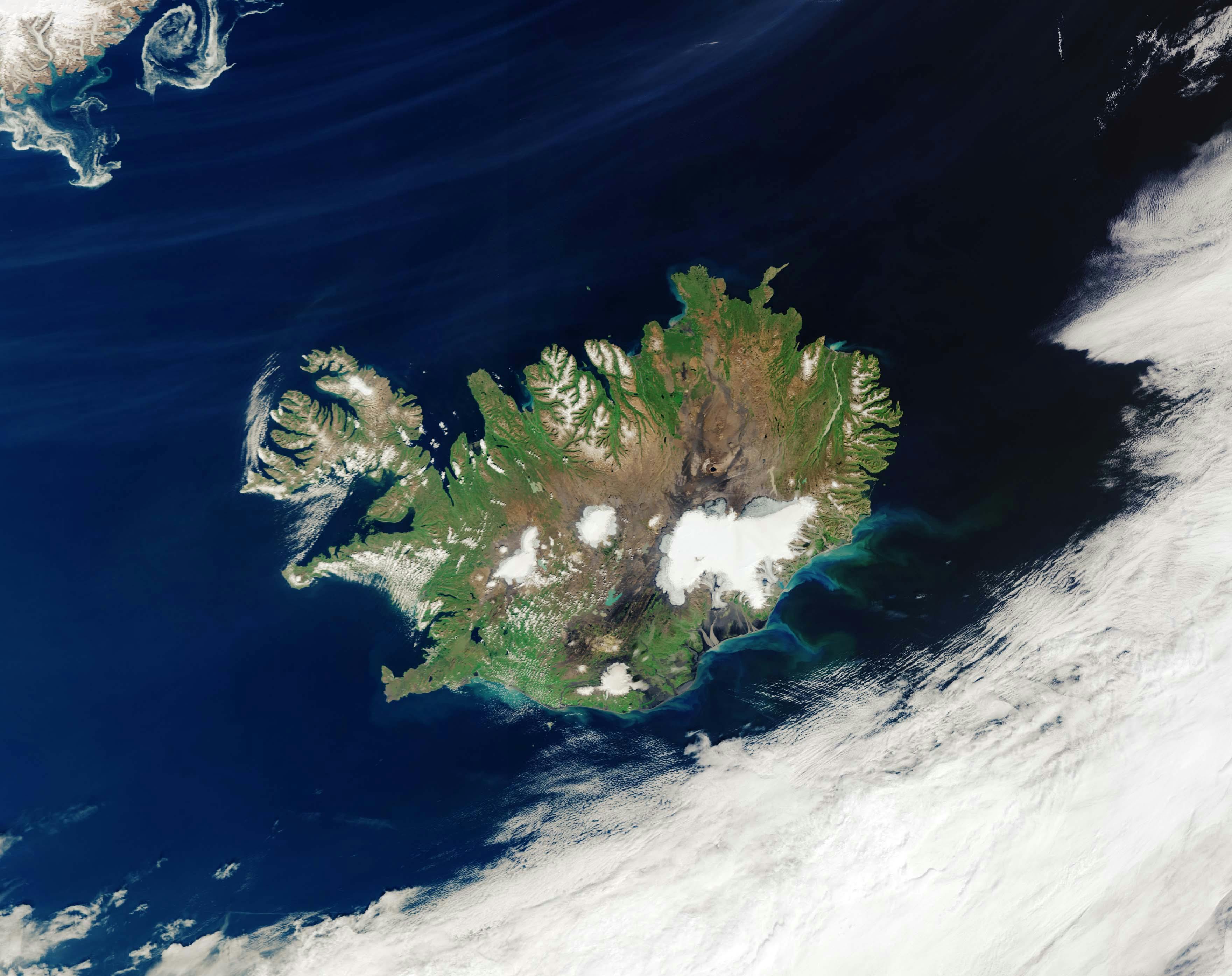
When to travel?
Mid or late-August to end of April.
To see the aurora, the sky has to be dark and clear. You can see the Northern Lights anywhere in Iceland from around middle of August until the end of April, as long as the sky is clear. Of course, they’re in the sky during the summer months, but then it never gets dark enough for them to be visible. In May, June and July the sky is simply too bright to see the aurora.
To increase your chances even more, travel preferably around the equinoxes. Observations show that you are likelier to see Northern Lights in March/April and September/October than during other months of the year. Keep in mind though that this is the average. We still see beautiful aurora displays in November, December, January and February very, very often.
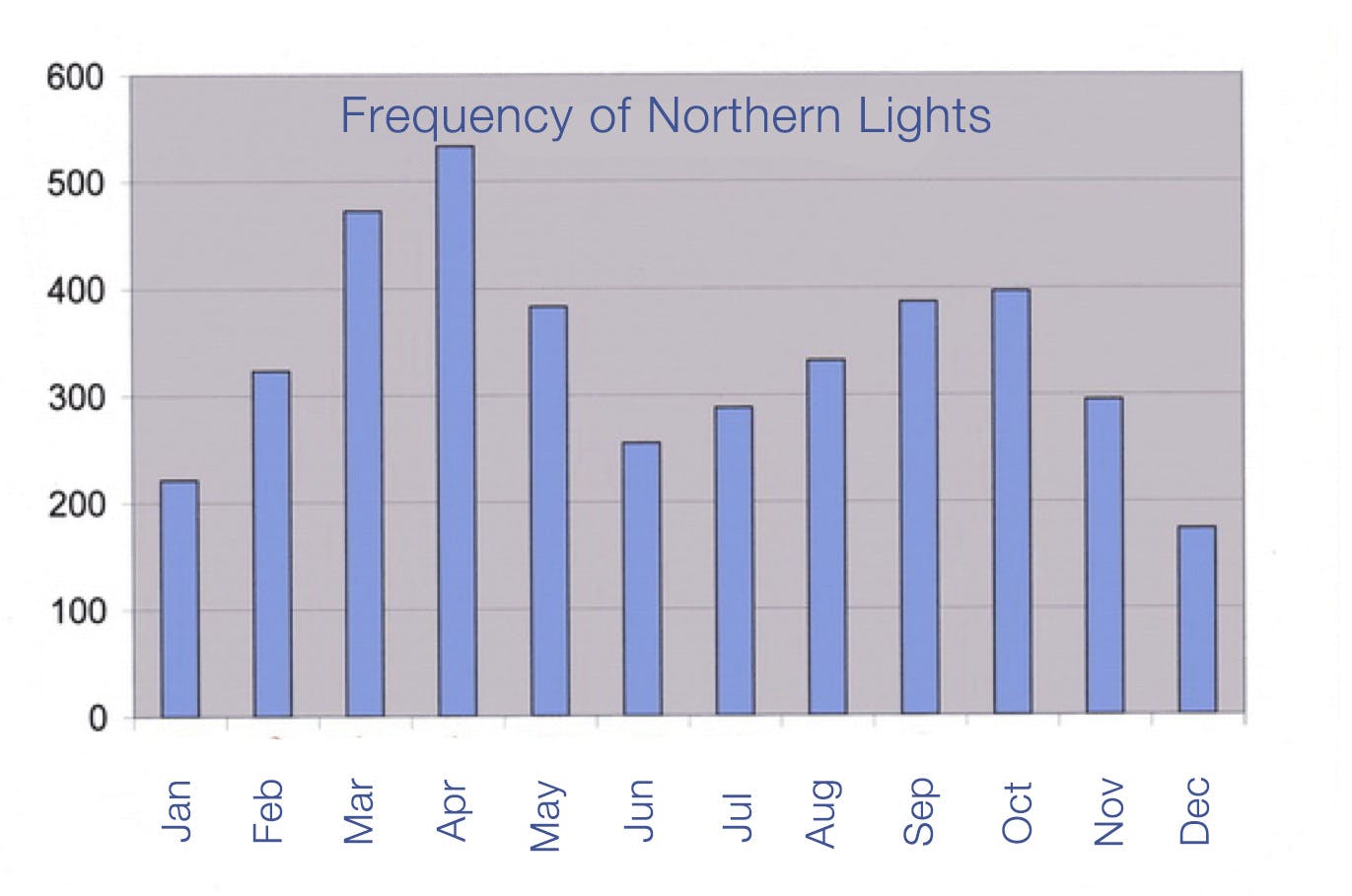
How long should I stay in Iceland?
The longer you stay, the higher your chances of seeing Northern Lights. Be mobile and stay for at least four nights, preferably more. A week should guarantee you seeing at least some Northern Lights, unless you are extremely unlucky.
When to be outside?
Northern Lights can appear any time during the night. That’s why you need to monitor the real time space weather data, like Bz south. On average, the Northern Lights appear most frequently from around 22:30 to 03:00 or so. The reason is that during that time, the auroral oval is right above you. You are deep within the most active part of it.
So make sure you have your eyes on the skies from around 22:00 to just after midnight. But check the real time data, sometimes the Northern Lights appear earlier - or later.
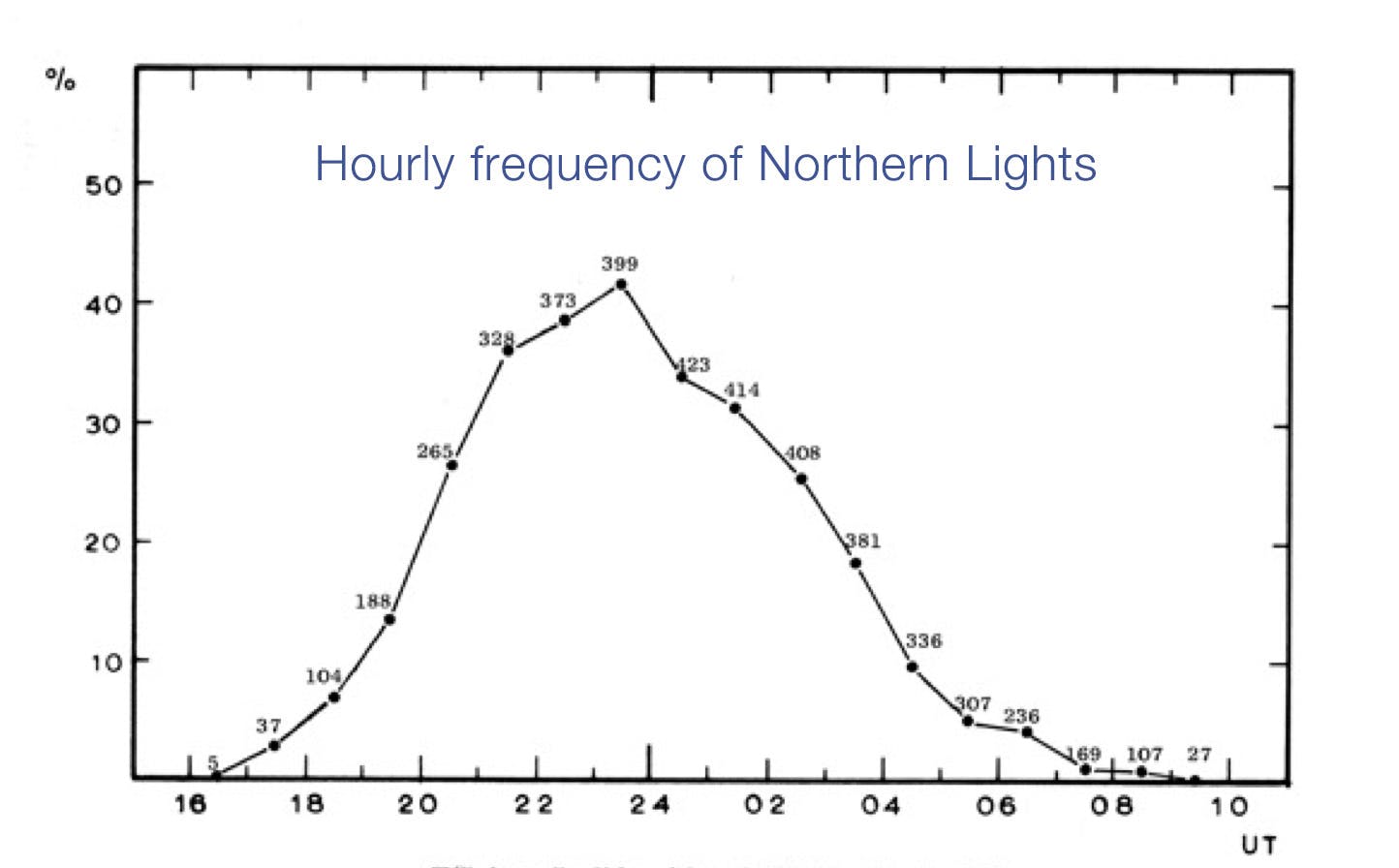
Should I focus on solar maximum?
No!
Observation show that Northern Lights are actually more common just after solar maximum than during. This is because coronal holes are more frequent after solar maximum and shortly before minimum.
Solar maximum occurred in 2024 and 2025 which means 2026, 2027, 2028 and 2029 should be excellent years to chase the Northern Lights.
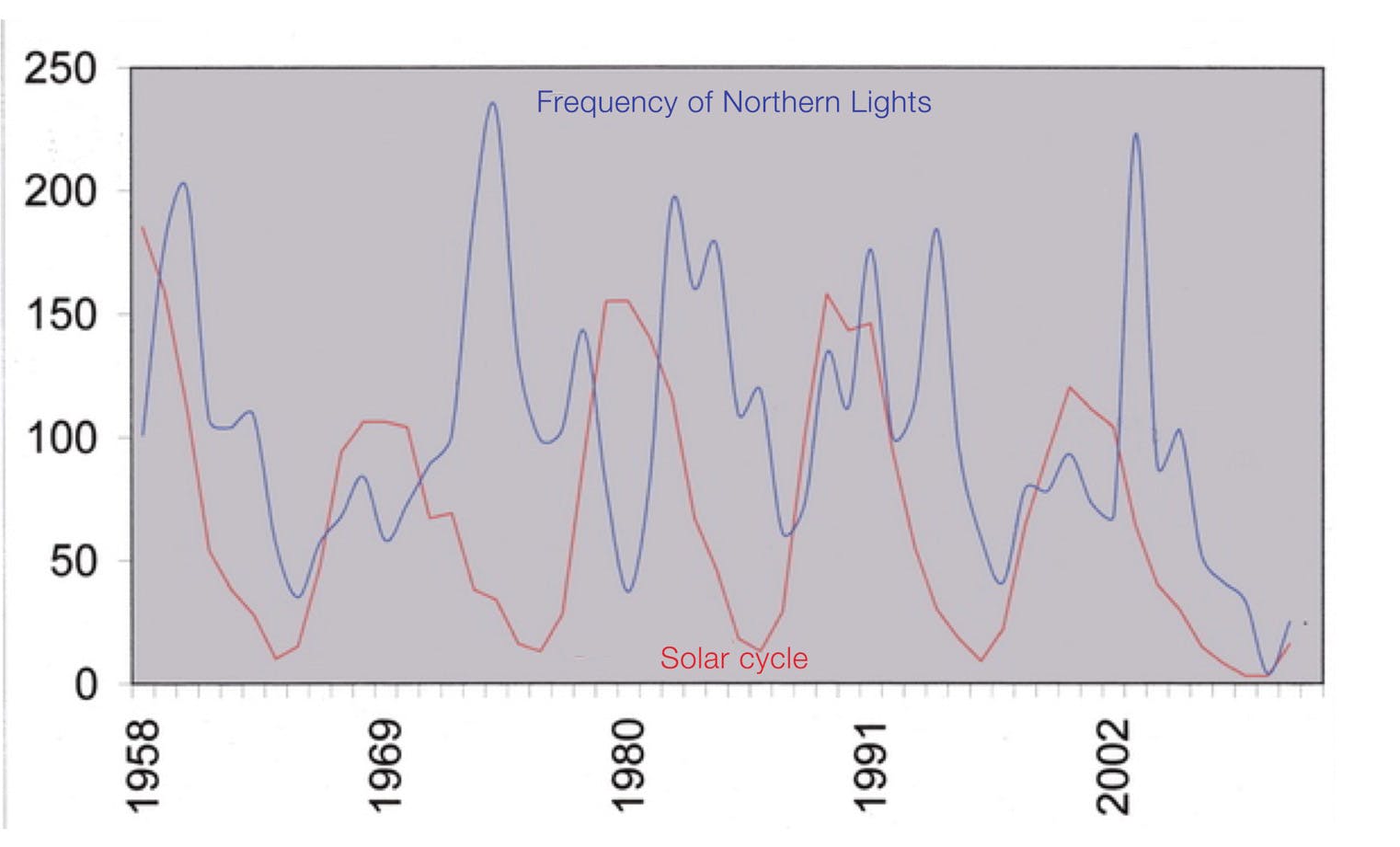
Travel close to new Moon
Moonlight has a varying degree of effect on the visibility of Northern Lights. The effect is small if the Northern Lights are bright but more pronounced if they are faint.
Moonlight can actually be nice at times, because it illuminates the landscape and makes Northern Lights photos even more beautiful.

Where to stay?
Stay in a rural area, at a cabin or a hotel known for excellent aurora service.
Artificial lighting affects the visibility of Northern Lights, so try to avoid being in town or within city limits where light pollution is heavy. There is a common misapprehension that you cannot see the Northern Lights from Reykjavík. That is simply not true, even though they are definitely much more dramatic and lovelier in proper darkness.
Check out the hotels we recommend. We especially recommend Hotel Rangá and Landhótel where you can get a 10% discount on your stay by using our promo code ICELANDATNIGHT. By doing that you support this website. Book on their website to get the discount.
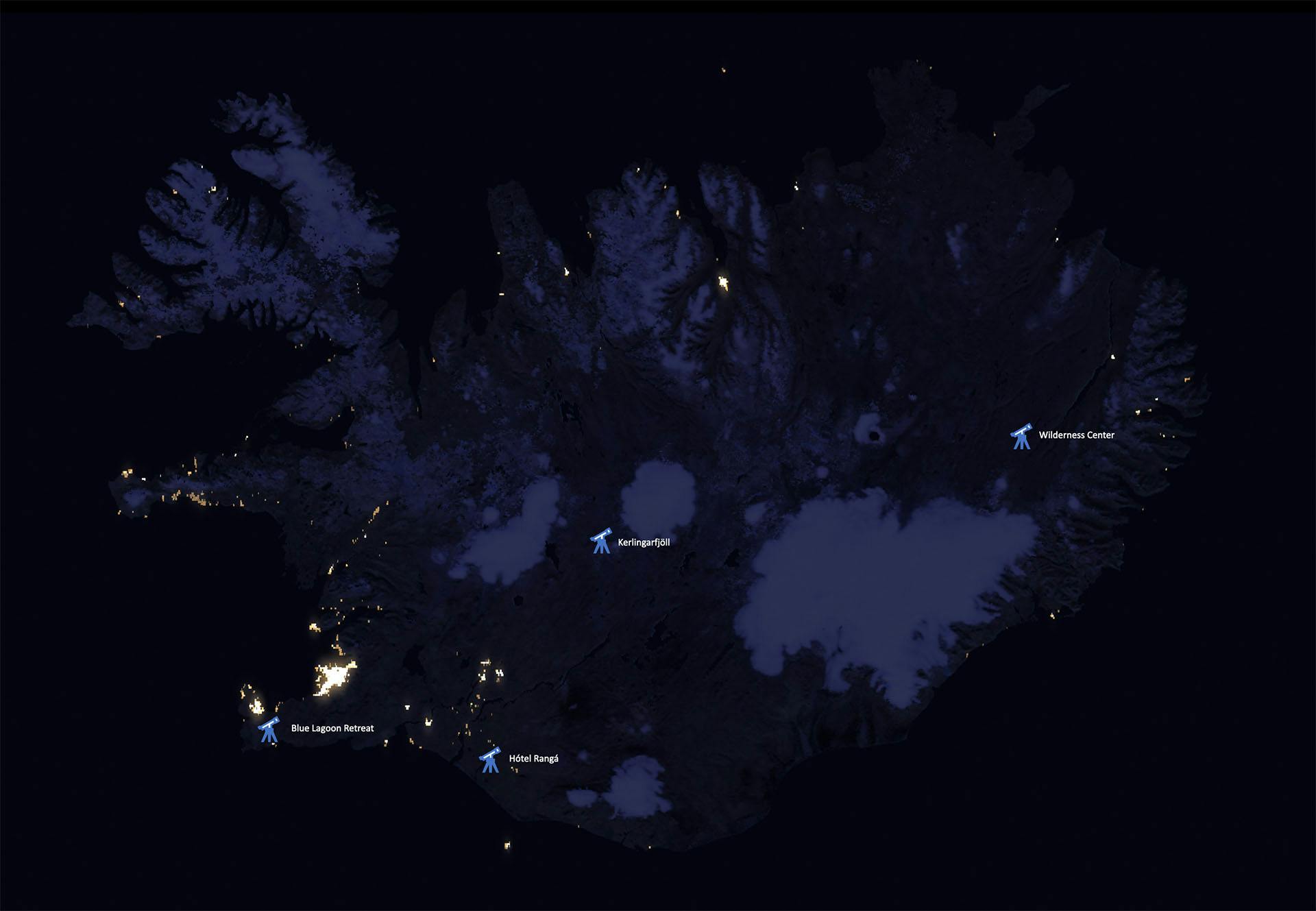
Should I book a tour?
Northern Lights tour is a great option for those who wish to head out into the night with a guide. We can safely recommend many excellent tours. Our favourites are small group tours or private tours. Even though they are more expensive, they are simply much more enjoyable.
Another option is to rent a car and drive to wherever chances are for clear skies. Just make sure you monitor weather and road conditions – we want you to be safe! For that, always start by visiting safetravel.is
So yes, increase your chances of catching Northern Lights by being mobile. Rent a car from carrental.is and use the coupon code icelandatnight for a 10% discount.
How to dress?
Since the Northern Lights are only visible during autumn, winter and spring, chances are it will get rather cold when the skies are clear. Dress accordingly and layer up. It’s way easier to take off a layer than add one you don’t have with you.
What to bring?
Besides warm clothes, bring patience and humility. Seeing bright and colourful Northern Lights display is ultimately a matter of luck, as it depends on favourable weather and space weather conditions.
Interested in aurora chasing photo tour?
Twice a year, in March and September, we offer photography tours for dedicated aurora chasers and aspiring photographers, along with our good friend and colleague, world renowned National Geographic photographer Babak Tafreshi.
Interested in joining? Check out Babak’s website.
In summary
Northern Lights are most common in the years shortly after solar maximum and just before solar minimum. They can be seen in Iceland from mid or late August until the end of April, likeliest near the equinoxes and close to midnight. Best enjoyed from a rural area, away from light pollution, close to new Moon. Prepare for cool and windy weather and dress accordingly. Book a tour or rent a car. Keep a close eye on the cloud cover and northern lights forecast on Iceland at Night.
Follow us on Instagram, Facebook and YouTube.
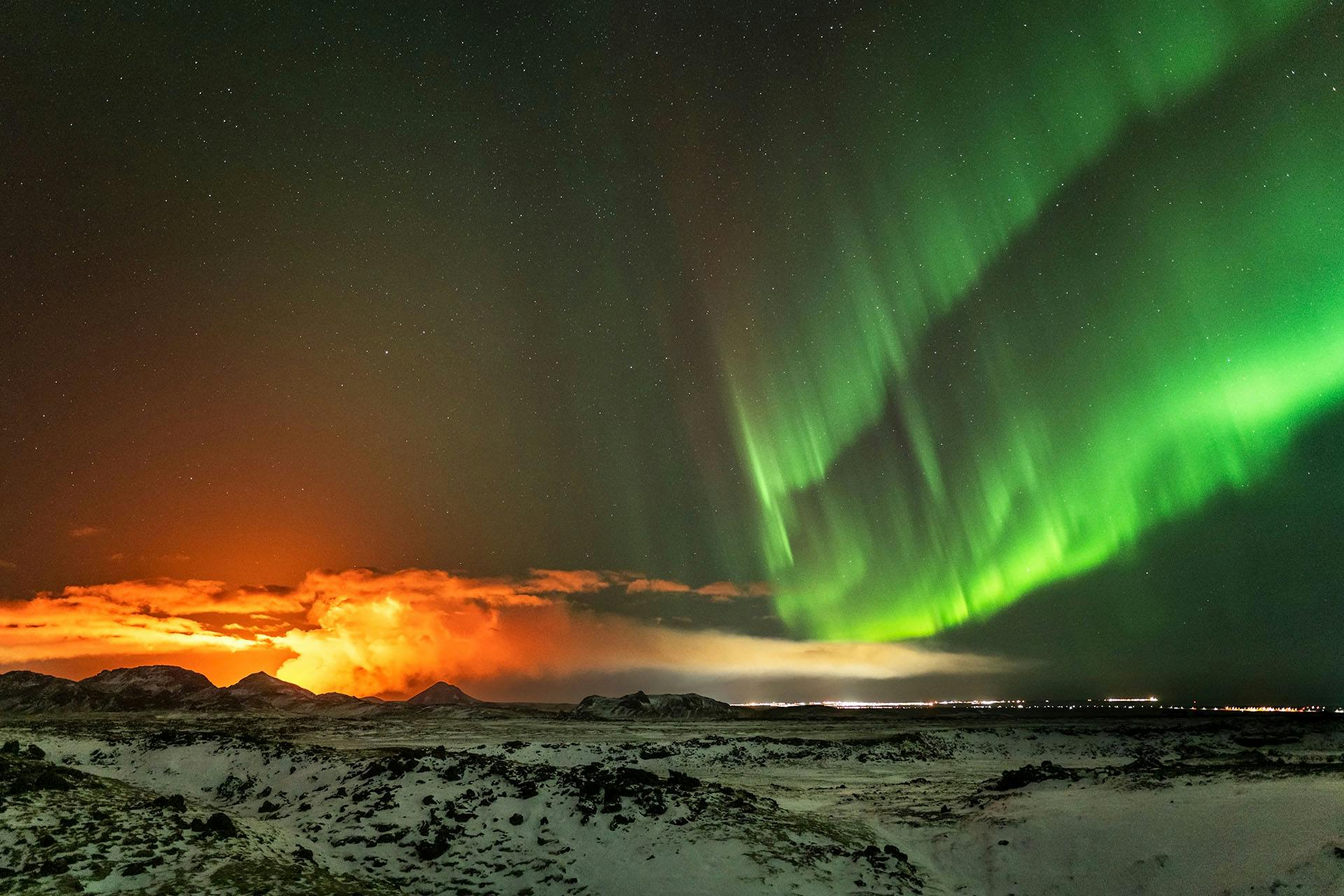
Important links
Sævar Helgi Bragason is an award winning astronomy and science communicator and educator, lecturer, author, TV host and owner and editor of icelandatnight.is and eclipse2026.is.


